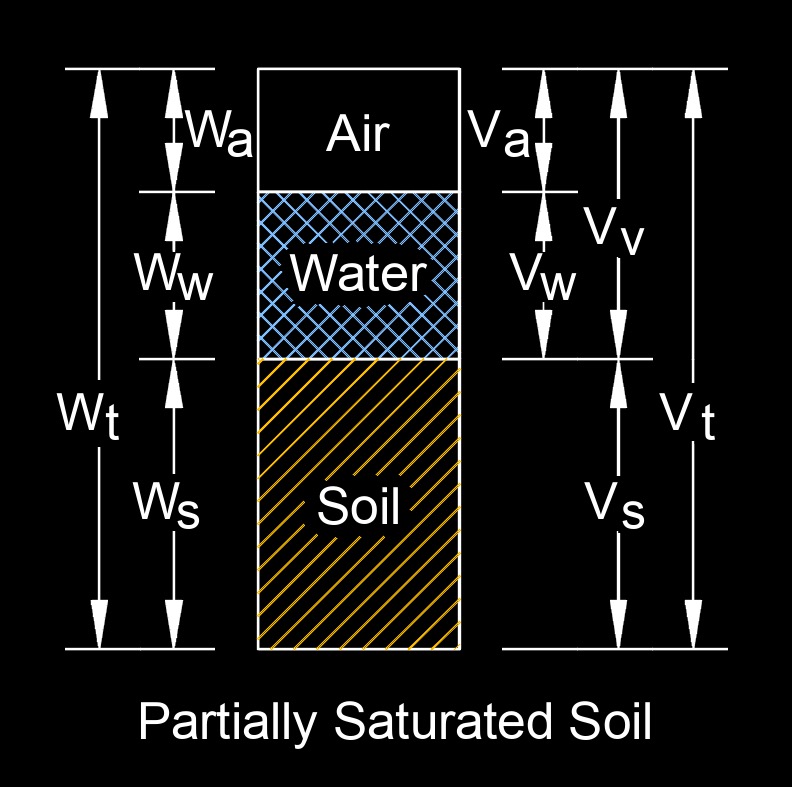Porosity
Porosity Formula |
||
|
\( n \;=\; \dfrac{ V_v }{ V_t }\) (Porosity) \( V_v \;=\; n \cdot V_t \) \( V_t \;=\; \dfrac{ V_v }{ n }\) |
||
| Symbol | English | Metric |
| \( n \) = Porosity | \(dimensionless\) | \(dimensionless\) |
| \( V_v \) = Volume of Voids (Air and Water) | \(ft^3\) | \(m^3\) |
| \(V_t \) = Total Volume of Soil | \(ft^3\) | \(m^3\) |

Porosity, abbreviated as n or \(\phi\) (Greek symbol phi), a dimensionless number, is the measure of empty spaces or voids within a material. It is a property that describes the amount of empty space, or pores, present in a substance relative to its total volume. These pores can be interconnected or isolated, and they can vary in size, shape, and distribution. A material with high porosity has a large number of voids, while a material with low porosity has fewer or no voids. Porosity can be found in various materials, including rocks, soils, ceramics, metals, and polymers. It is an important property in several fields, such as geology, engineering, materials science, and manufacturing.
The significance of porosity depends on the context and the material involved. In some cases, high porosity can be desirable, such as in filter materials or sponges that absorb liquids. In other cases, low porosity is preferred, such as in dense building materials to improve structural strength or in waterproofing applications.
It's important to note that porosity is different from permeability, which refers to the ability of a material to allow fluids or gases to flow through it. While porosity describes the void space, permeability focuses on the interconnectedness and ease of flow within that space.

